A new class of vehicle to the field of fire appliance design that is capable of reconnaissance as well as suppression will be introduced by Amatoya. As indicated by research, there is a need to develop an advanced and highly specialized light tanker which must function primarily as a reconnaissance vehicle while providing unparalleled vehicle and crew safety/survivability. It also need to maintain superior off road capabilities and possess appropriate fire suppression technology for the purpose of initial response and front line defense.
Designer : Liam Ferguson
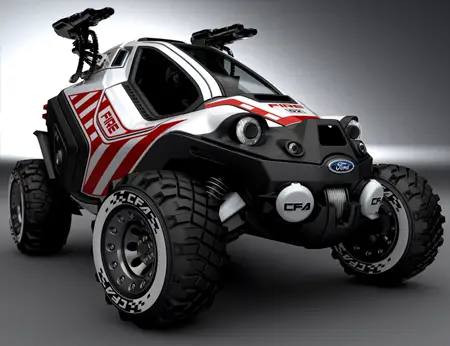
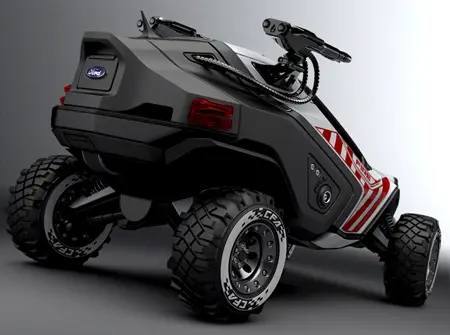
Text from Liam :
BLACK SATURDAY
The 2009 Black Saturday bushfires decimated the state of Victoria. The density of fuel loads, extreme temperatures, low humidity and unpredictable wind speeds culminated in disaster. Over 170 lives were lost and thousands made homeless. The scale of the destruction is unparalleled in recorded Australian bushfire history. The uncontrollable nature of the fires and the unique conditions experienced on February 7 saw authorities overwhelmed and incapacitated by the sheer scale and velocity of the event. The unprecedented level of social and political attention following the 2009 Victorian bushfire season has provided an exceptional opportunity for growth and understanding, not only to the cause and nature of these fires, but what measures can be taken to further and more efficiently respond, defend and suppress such catastrophic events.
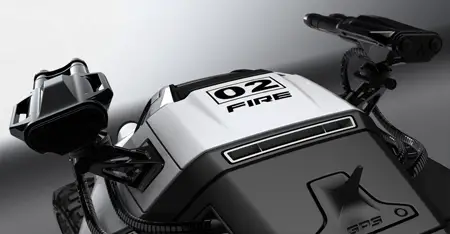
BENCH MARKING
While new developments in crew and vehicle survivability are impressive, to effectively combat the seemingly more explosive fires occurring in the current climate, a more encompassing approach to appliance design and strategic deployment is required. Tanker based suppression as a strategy to rural fire events has been the fundamental approach employed by authorities for over 70 years. While this method is tested and proven, the advancements in fire retardant materials and new suppression technology have yet to be reflected in appliance design.
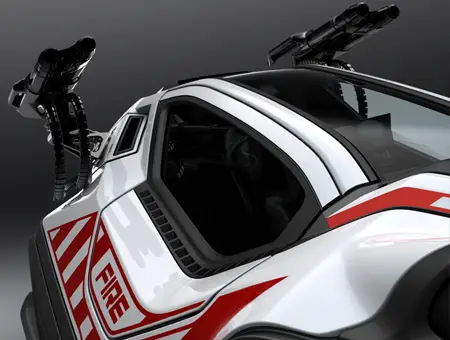
RECONNAISSANCE
Upon arrival at any a fire event, in order to establish the most effective means of suppression and relevant appliance deployment, in-depth and ongoing site reconnaissance must be undertaken. In an extreme event such as the Victorian Black Saturday fires, this task becomes exponentially critical to the survival of all crew and civilians located on the fire ground. Currently the role of site reconnaissance is predominantly carried out by light tankers or QAVs (Quick Attack Vehicles), typically these are modified single cabin commercial utility vehicles such as the Toyota Landcruiser. While the off road performance and manoeuvrability of such a vehicle is sufficient, its ability to actively suppress a fire threat is severely limited by the considerably small water supply (500lt) and distinct lack of survival engineering, fundamentally making it inadequate for its role.
CREW LAYOUT
Typically medium and heavy tankers require 5-6 crew members to be operated effectively. AMATOYA requires only 2. More military in its approach, reducing crew numbers per appliance will allow for greater dispersion of resources during a fire response. Principal concerns when developing a vehicle of any nature are driver position, ingress/egress and vision angles. These elements become even more crucial in a vehicle purpose built for reconnaissance. A central, forward and high driver and ROSCO operator position akin to the Apache assault helicopter with generous down vision will assure functionality. Access is via two gull wing doors, an optimal solution to accommodate the unconventional bodyside form. The distinct lack of a traditional b-pillar will provide uninterrupted views for the ROSCO operator situated above and behind the driver.
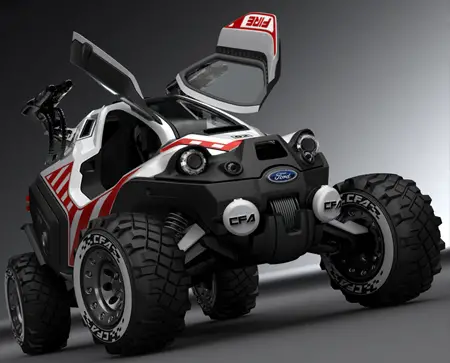
SURVIVABILITY
Cabin temperature and vehicle survivability are central to the AMATOYA concept. Existing approaches in survival engineering on fire tankers consistently appears as augmentation rather than integration. Methods are passive, typically reactive and often incapacitate the appliance when in use. A key example is the use of curtain heat shields, while effective, when employed render the appliance out of operation. To create a homogenous directive towards survivability AMATOYA incorporates state of the art clear aerogel laminated insulation in the windows and bodywork, a dedicated auxiliary water supply to operate a highly efficient, intelligent temperature controlled spray down system, military grade sacrificial thermo ceramic intumescent paints, and a mechanically injected large displacement diesel engine specifically engineered for the unique conditions experienced on the fire ground. These measures will assure that even in the case of an extremely prolonged and high intensity burnover the vehicle will not only maintain cabin integrity, but opposed to existing appliances AMATOYA will remain fully operational.
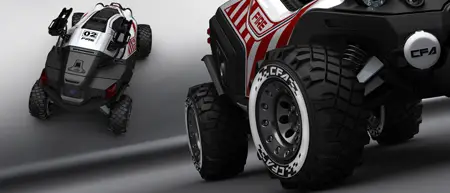
OFF ROAD PERFORMANCE
AMATOYA represents the pinnacle of specialised performance in the fire appliance design field. Off road capabilities reflect enthusiast 4WD methods, including generous approach, departure and over ramp angles, suspension travel, ground clearance and minimised turn circle. Central tire inflation (CTI) and run flat tire (RFT) technology coupled with beadlock tires will allow an extensive band of dynamic pressure control to aid in traversing the complex terrain often encountered on the fire ground.
SUPPRESSION ABILITY
A Remotely Operated Suppression Cannon Outfit (ROSCO) coupled with a generous 1800lt + 400lt auxiliary water supply, offers a unique dynamic to vehicle operation. Current suppression techniques require large crew numbers (at least 5 per appliance) to perform through intermittent periods of strenuous labour to have any form of impact on a fire. The ROSCO system utilising IFEX3000 impulse technology is not only a hugely efficient means of fire suppression, but vitally will eliminate crew members being subjected to the elements and stresses of extended high intensity work on the fire ground, while constantly maintaining vehicle mobility. A highly rated thermal imaging camera along with directional spot lights will assist in ‘hotspot’ location to determine the most effective direction of attack.
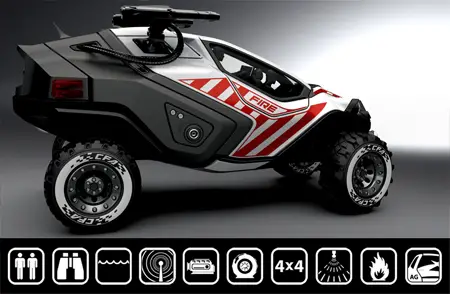
MANUFACTURING
The vehicle adopts many conventional fabrication techniques associated with low production run specialised vehicles. The point of difference which separates this concept from existing appliances is the proposed monocoque steel body, comparable to military MRAP vehicles. A conventional fire tanker is built body-on-frame from a standard cab chassis truck base. While this approach is successful, the lack of integration results in certain performance issues. Body roll due to the on board water supply is an notable problem, however by creating a fully integrated solution, water reservoirs can be strategically located central and low in the vehicle to dramatically improve the centre of gravity.
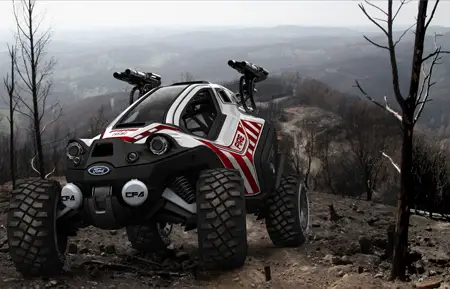
THE FUTURE…
With an emphasis on crew and vehicle survivability combined with a radically altered approach to fire suppression, the AMATOYA Fire Reconnaissance Vehicle is dramatically separated from any existing appliance in operation. The use of contemporary technology, materials, finish and form, encourages desirable attributes of safety, mobility, efficiency and performance. In an extreme fire event any measure of advantage is welcomed in a very real situation where seconds count. The AMATOYA concept provides the monumental ability to sustain reconnaissance work without impairing mobility or compromising the safety of operating crew developing a revolutionary dimension to fire suppression which has yet been explored. While idealistic in its execution, the project endeavours to question the adequacy of existing appliances and suppression strategies. The goal is not to dismantle a system which has been utilised for over 70 years, but rather to modernise and homogenise, to ask the question and demonstrate just what may be possible in the future.
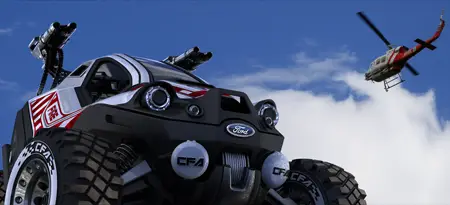
(Click to view bigger image)
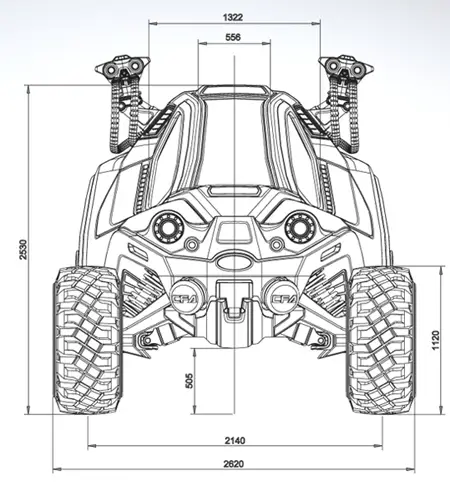
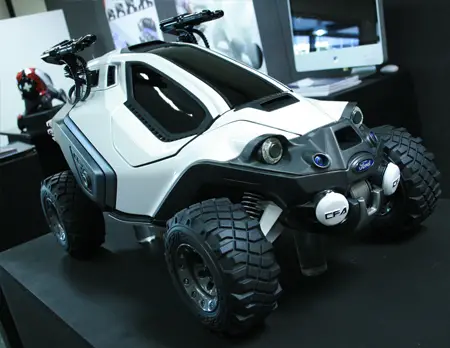





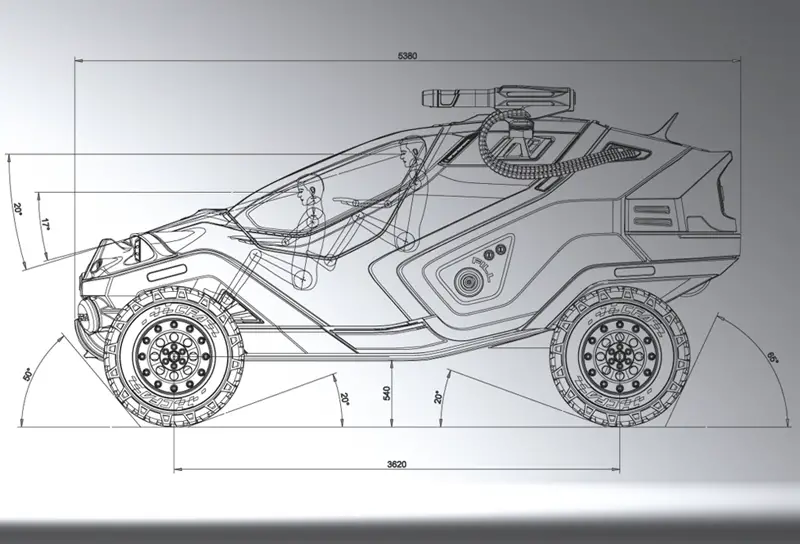

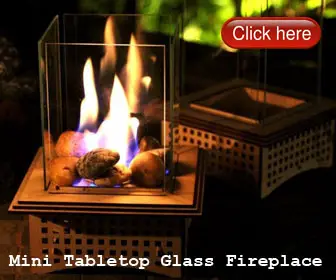

Interesting concept, but why use creative talent for war?
It's not meant for war it's meant for fire fighting, can you not see the word FIRE on the side?
this car is so cool and same to its looks…:)
Great design with great purpose. Congratulations really.
Must for So CA alone with our wildfires each year- I a Station Fire survivor.
Yes the Aug 2009 Station Fire.
We could have used this then.
Must for future wildfires & Air[ports, Fuel depots, shipyards, warehouses, Chem plants alone,.
apik tenan piye carane le nggawe yo cak
wheels arent protected…
This is an awesome idea. Will it be available to the public and when?
great! mow down traffic and get to work on time with fords new war vehicle! only $999,999!
It's not a war vehicle, although one can certainly envision it being used for military purposes too <_<
but the design does seems too nice for a rescue vehicle… they should really spend more time making the thing work better instead of making it nicer looking
regarding the unprotected tires… it's stated that it uses Central tire inflation (CTI) and run flat tire (RFT) meaning it's mostly protected from punctures since it reseals itself if punctured and the nature of RFT tires is much more durable than normal ones.
There isn't much you can do about more protection for tires since tires have to be rubber or a similar material and is designed to wear out eventually as a trade off for better grip.
But from what I can see the entire vehicle is still using existing technologies and there is nothing really ground-breaking about it.. it should have been done a while ago but I guess people did not see a need for it until tragedy struck them in the gut.
tht is badass
Looks like a pussy car make it look scarier
wow dude can i buy a copy of the model from you?
Price???
i want more info. about this car
Speed????????
wow i love it! it's so cool! i like to use that machine in fire fighting. i'm a fireman
I would buy this just to drive around town!
dear im writting this short email about this amatoya vehicle, would this vehicle be usefull around the farm ? keep me posted on more new technology i
I think they would bring water gun battles to a whole new level! I need 2!
Why are these trucks not used for Indy class open wheel racing? Just fill 'em with foam
So wonderful design of car. great art by you which you have this one for people. congratulation.
can you make a one man version that is no more then 54" wide minus the fire suppression system and in black